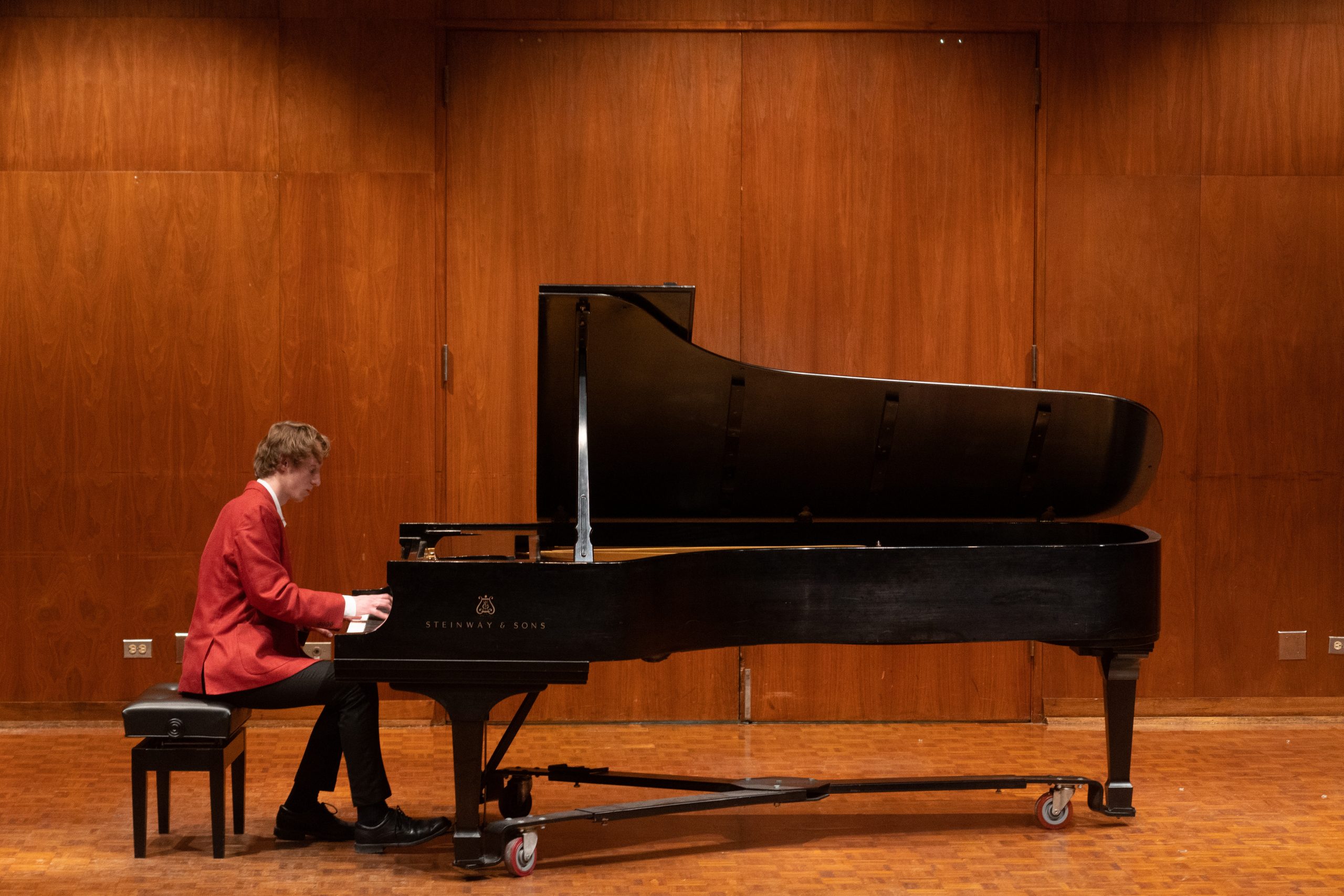The repertoire for piano is among the vastest of all instruments. Though not as old as flutes or drums, the piano’s unique sound world — which can support complex melodic and harmonic ideas simultaneously — has made it a hugely popular instrument for composers. This past Monday, Feb. 13, junior Henry Giles offered an exciting piano recital that thoroughly explored the diverse abilities of the instrument.
Giles began with Dmitri Shostakovich’s “Prelude and Fugue in G Major,” op. 87, no. 3. The piece belongs to the composer’s 1951 “24 Preludes and Fugues,” which includes a set in every major and minor key. It serves as a clear homage to Bach—whose own “The Well-Tempered Clavier” covers the same scope—but also extends the dialogue to a modernist aesthetic.
The initial prelude contrasts a stately and heavy opening theme with a quicker and chant-like descending motive. In the Fugue, the opening subject is hugely different in character, acting as a giddy and fun theme that pushes the music forward. Giles’ articulation was first-class and the subject’s interpretation was clearly treated with careful attention.
Giles then switched from Russian modernism to French impressionism, following with Claude Debussy’s prelude “Ce qu’a vu le vent d’ouest,” translated as “What the West Wind Saw.” As the seventh prelude in Debussy’s first set of Preludes from 1910, it represents a mature composer with full confidence in their abilities.
The prelude began with a sweeping wall of ambiguous color, occasionally punctuated in the peak of each arpeggio. This stormy atmosphere became more subtle when a slower chordal section emerged, but the earlier ferocity reappeared soon after. Giles easily delivered on the work’s virtuosic demands, including particularly clean octave leaps throughout.
For his third piece, Giles played Sergei Prokofiev’s “Étude in C minor,” op. 2, no. 4—a youthful work by the Russian modernist. A brief and continuously fast-paced work, Giles gave a playful feel to the lilting motives passed throughout the piano’s register. For the later chromatic developmental section, Giles delivered immense excitement in its buildup.

Stylistically speaking, Johannes Brahms’s “Ballade in B Major,” op. 10, no. 4 stood out in the program. Giles himself explained that he included Brahms so the music “wasn’t all just bombastic and loud.” Indeed, as a longer piece with a more romantic, laid-back feel, it offered a welcome breath from the earlier turbulent music.
The program’s finale was Alberto Ginastera’s “Piano Sonata No. 1,” op. 22. As a 15-minute work, it effectively made up half the recital’s content. This content differed vastly between the four movements, each of which asked for different techniques from the pianist.
“Allegro marcato,” the 1st movement, featured alternating time signatures, dense chords and dance-like rhythms. Although the 2nd movement— “Presto misterioso”—remained fast-paced, it had an atmosphere of considerable mystery and otherworldliness, described by Giles as “hesitant alien communication.”
For the slow third movement, “Adagio molto appassionato,” a more mediative quality emerged. According to Giles, the movement evokes “A lone guitar strumming […] [which] seems kind of distant [and] not really grounded.” This sense of calm was quickly interrupted by the final volcanic movement, “Ruvido ed ostinato.”
There seems to be an unspoken rule that performers should carefully balance slow and fast repertoire in solo recitals. Yet, the general rhythmic excitement from all but the slower Brahms ballade was too engaging to criticize. Applause erupted immediately the moment Giles stood up from the piano. Indeed, the audience was full of smiles for such an exhilarating program.

